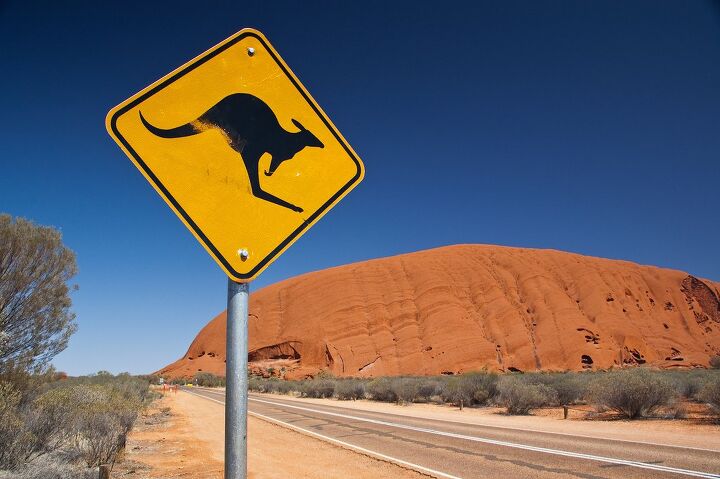Australia Building Electric Highway Even Though Nobody There Owns An Electric Car

Australia’s Queensland Cabinet announced it would be constructing one of the longest electric highways in the world this week. The expanse of roadway already exists on the country’s eastern seaboard, but the $3 million plan intends to add an 18-station network between Gold Coast and Cairns. While EV owners might not want to hazard into the outback just yet, coastal drivers will have some peace of mind traveling between Australia’s major towns.
The fast-charging network plans to provide free power for at least a year in what the environment minister, Steven Miles, explained was a bid to increase the number of electric cars on Queensland roads.
“This project is ambitious, but we want as many people as possible on board the electric vehicle revolution, as part of our transition to a low emissions future,” Miles said during the project’s announcement.
Australia intends to finish its “electric highway” within six months and compared it to the scale of California’a own “west coast green highway.” Although, there are some massive differences between the U.S. and the Land Down Under in terms of EV ownership. Australians have largely shunned electric vehicles. It’s estimated that total EV sales for the country, between 2010 and 2017 haven’t yet surpassed 5,000 units, despite the growing popularity of non-plug-in hybrids. Meanwhile, the State of California accounted for almost 250,000 plug-in deliveries between 2011 and the tail-end of 2016.
Granted, California does possess a higher overall population and an enviable charging network. But even less populous U.S. states, like Florida, surpass Australian EV sales by a margin of over 4-to-1. And there is worse news, Aussie plug-in sales have suffered a 90 percent drop after Nissan and Mitsubishi pulled the Outlander P-HEV and Nissan Leaf off of the market last year.
“The most recent Queensland Household Energy Survey showed that 50% of Queenslanders will consider an electric vehicle, plug-in hybrid or regenerative braking hybrid, when purchasing a new car in the next two years and that majority said improvements to public fast-charging infrastructure would further tempt them into purchasing an EV,” Miles stated. “The future truly is electric.”
It, assuredly, could be. But, with so few PEV options within the Australian marketplace, it’s difficult to imagine consumers actually succumbing to the implied temptation right away. With Japan’s heaviest hitters off the table, consumers are left with the Mercedes-Benz C350e and Tesla Model S as the country’s most popular options. But neither offer the affordability of Chevrolet’s Bolt, which isn’t expected to make it Australia anytime soon.
However, this hasn’t stopped the plan from receiving praise from the government or automakers hoping to sell EVs — like Audi, BMW, Hyundai, Jaguar Land Rover, Mercedes-Benz and Mitsubishi.
Behyad Jafari, chair of Australia’s Electric Vehicle Council said the Queensland Government was to be commended for its national leadership and supporting the electric vehicle industry. “I encourage all governments across Australia to follow suit, particularly as this support will help to provide motorists with increased choice of cars that are cheaper and healthier to operate.”
[Image: Bluedeviation/ Flickr ( CC BY-ND 2.0)]

A staunch consumer advocate tracking industry trends and regulation. Before joining TTAC, Matt spent a decade working for marketing and research firms based in NYC. Clients included several of the world’s largest automakers, global tire brands, and aftermarket part suppliers. Dissatisfied with the corporate world and resentful of having to wear suits everyday, he pivoted to writing about cars. Since then, that man has become an ardent supporter of the right-to-repair movement, been interviewed on the auto industry by national radio broadcasts, driven more rental cars than anyone ever should, participated in amateur rallying events, and received the requisite minimum training as sanctioned by the SCCA. Handy with a wrench, Matt grew up surrounded by Detroit auto workers and managed to get a pizza delivery job before he was legally eligible. He later found himself driving box trucks through Manhattan, guaranteeing future sympathy for actual truckers. He continues to conduct research pertaining to the automotive sector as an independent contractor and has since moved back to his native Michigan, closer to where the cars are born. A contrarian, Matt claims to prefer understeer — stating that front and all-wheel drive vehicles cater best to his driving style.
More by Matt Posky
Latest Car Reviews
Read moreLatest Product Reviews
Read moreRecent Comments
- ToolGuy Let's review: I am a poor unsuccessful loser. Any car company which introduced an EV which I could afford would earn my contempt. Of course I would buy it, but I wouldn't respect them. 😉
- ToolGuy Correct answer is the one that isn't a Honda.
- 1995 SC Man it isn't even the weekend yet
- ToolGuy Is the idle high? How many codes are behind the check engine light? How many millions to address the traction issue? What's the little triangular warning lamp about?
- Ajla Using an EV for going to landfill or parking at the bad shopping mall or taking a trip to Sex Cauldron. Then the legacy engines get saved for the driving I want to do. 🤔


































Comments
Join the conversation
If you build it, Elon Musk and other government-money-chasers will come.
The more socialist markets like in the EU, US, Canada Wow Big Al from Oz that's pretty brutal ! I knocked my Little Red Book off the coffee table when I read your comment.I'm sorry !